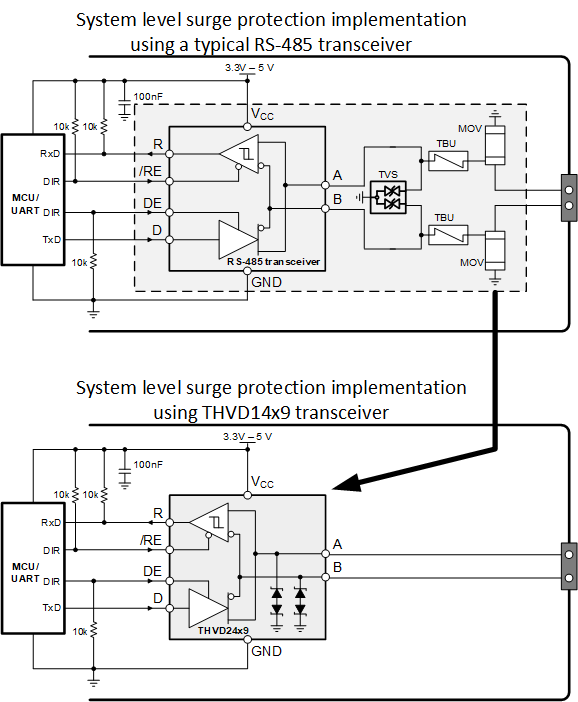SLLSFP5 January 2024 THVD2419 , THVD2429
ADVANCE INFORMATION
- 1
- 1 Features
- 2 Applications
- 3 Description
- 4 Device Comparison Table
- 5 Pin Configuration and Functions
- 6 Specifications
- 7 Parameter Measurement Information
- 8 Detailed Description
- 9 Application and Implementation
- 10Device and Documentation Support
- 11Revision History
- 12Mechanical, Packaging, and Orderable Information
Package Options
Refer to the PDF data sheet for device specific package drawings
Mechanical Data (Package|Pins)
- DRC|10
Thermal pad, mechanical data (Package|Pins)
Orderable Information
9.2.2 Detailed Design Procedure
RS-485 transceivers operate in noisy industrial environments typically require surge protection at the bus pins. Figure 9-3 compares 4kV surge protection implementation with a regular RS-485 transceiver (such as THVD14x0) against with the THVD24x9(V). The internal TVS protection of the THVD24x9(V) achieves ±2.5kV IEC 61000-4-5 surge protection (SOIC package) without any additional external components, reducing system level bill of materials.
 Figure 9-3 Implementation of System-Level Surge Protection Using THVD24x9(V)
Figure 9-3 Implementation of System-Level Surge Protection Using THVD24x9(V)